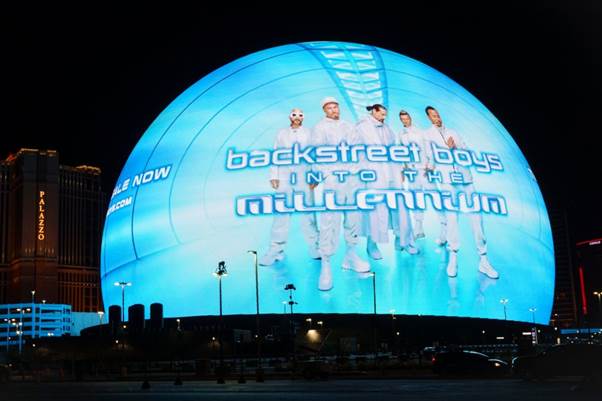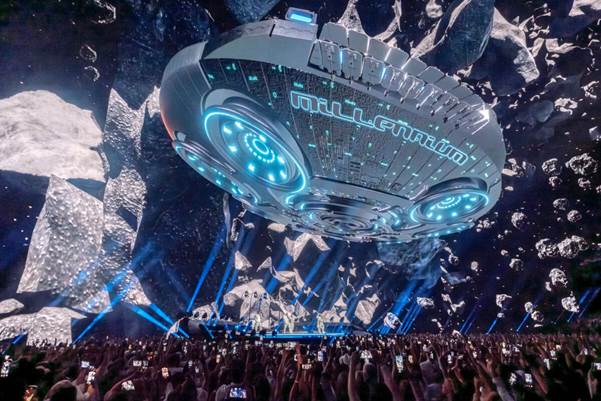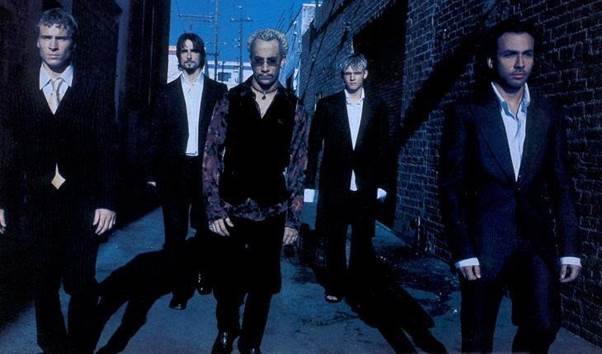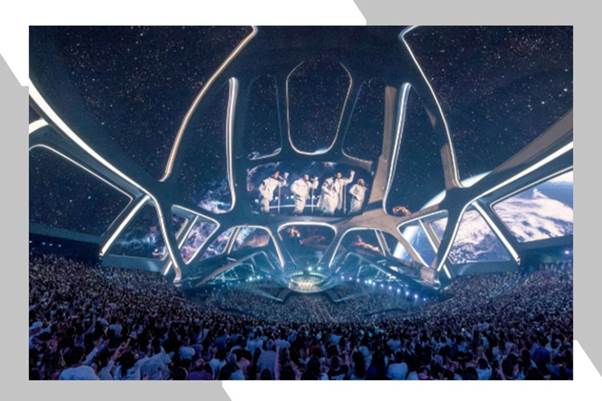Before we dive into the Backstreet Boys’ groundbreaking Las Vegas residency at the Sphere, it’s worth revisiting the unusual origins of the group. Long before he became known as the mastermind behind boy bands, Lou Pearlman was in aviation. He leased blimps, private jets, and helicopters to corporations like MetLife and McDonald’s, often using them as giant floating billboards. But one unexpected event in the 1980s changed the course of his career forever.
When New Kids on the Block chartered one of Pearlman’s planes for a tour, he was shocked at how much money they were spending. If a boy band could afford private jets, the industry must be lucrative. With that realization, Pearlman set out to create his own group. After a nationwide audition process costing millions, he assembled AJ McLean, Howie Dorough, Nick Carter, Kevin Richardson, and Brian Littrell in 1993 — and the Backstreet Boys were born.
While Pearlman would later become infamous for financial scandals and eventually die in prison, his influence launched one of the most successful boy bands in history. Fast forward three decades, and the Backstreet Boys have once again struck gold — this time in Las Vegas.

Touring vs. Residencies: The Harsh Economics of Music
Big-name tours sound glamorous and profitable, but the reality is often different. When an artist launches a global stadium tour, gross revenues can reach hundreds of millions of dollars, but expenses eat away at those figures quickly. Costs include stage equipment, lighting rigs, sound systems, dozens of semi-trucks, airfare, hotels, catering, and security. Add to that the cost of keeping performers and crews on the road for months or even years.
Take Beyoncé’s Cowboy Carter tour, which grossed $400 million across 32 shows. After promoters’ cuts, production expenses, and other costs, her personal net likely landed around $80 million — an impressive payday, but one that required nonstop performing for months. Taylor Swift’s record-breaking Eras Tour grossed over $2.1 billion, yet even she likely netted around 20% after costs. That still left her with over $400 million, but it came after nearly two years of traveling and performing 149 shows across the globe.
Now compare that to what the Backstreet Boys are doing at the Sphere. Instead of exhausting world tours, they’ve managed to engineer a setup where fans come to them — and the profit margins are staggering.

The Sphere Strategy: A Money Machine in Las Vegas
Las Vegas residencies are nothing new, but the Sphere has taken the concept to another level. The Backstreet Boys’ show at this futuristic venue is estimated to gross $4 million per night. What makes this figure extraordinary is how little overhead the band incurs compared to traditional touring.
The group reportedly invested around $7–8 million upfront to create the dazzling visuals for their performances. That investment was recouped within just a few shows. After that, expenses dropped dramatically. The Sphere handles security, concessions, and ticketing. There’s no need for dozens of trucks hauling equipment or hundreds of staff members traveling the globe. The band simply shows up, performs, and cashes in.
Nick Carter lives in Las Vegas, so he’s practically commuting to work. Other members like Kevin Richardson and AJ McLean make quick flights from Los Angeles, while Brian Littrell and Howie Dorough fly in from Florida. Compared to the logistical nightmare of a worldwide tour, this is as streamlined as it gets.
Industry insiders estimate that the band is pocketing around 70% of their gross revenue at the Sphere. That translates to about $2.8 million net profit per show. Split five ways, each Backstreet Boy is earning around $560,000 per night. Over the course of 35 shows, that adds up to nearly $18 million per member — without leaving Las Vegas.
Comparing the Numbers: Backstreet Boys vs. Pop Icons
Let’s put those numbers in perspective:
- Beyoncé’s Cowboy Carter Tour: $400 million gross → approx. $80 million net → $2.5 million net per show.
- Taylor Swift’s Eras Tour: $2.1 billion gross → approx. $420 million net → $2.8 million per show.
- Backstreet Boys’ Sphere Residency: $4 million gross per show → $2.8 million net → $560,000 per member per night.
On a per-show basis, the Backstreet Boys are matching Taylor Swift’s earnings but with a fraction of the work and overhead. Even more impressive, on a per-fan basis, the Backstreet Boys are outperforming the biggest stars in the world. Taylor earns about $41 per fan on average, Beyoncé about $32. The Backstreet Boys? Around $150 per fan — nearly five times higher.
It’s efficiency at its finest. While Taylor and Beyoncé grind through years of constant travel and performance, the Backstreet Boys make the same nightly net — without ever leaving Las Vegas.
From the Black & Blue Tour to the Sphere
This isn’t the Backstreet Boys’ first time raking in huge numbers. In 2001, they launched the Black & Blue World Tour, which grossed $315 million across 110 shows. At the time, it was one of the highest-grossing tours in history. But despite the massive gross, expenses likely cut their take-home margin down to 10–15%. That means each member may have walked away with $6–9 million after a grueling year of constant travel and high-energy performances.
Fast forward to today, and the contrast couldn’t be clearer. Instead of exhausting themselves on the road, the group can now show up in one location, lean on cutting-edge graphics, and still deliver the nostalgia fans crave. Their audience — largely fans from the 1990s and early 2000s now in their 30s and 40s — is more than happy to relive their teenage years in the comfort of Las Vegas.

Why the Sphere Residency Is Revolutionary
The Backstreet Boys have essentially rewritten the financial playbook for aging pop stars. By embracing residencies over tours, they:
- Maximize Profit Margins: Lower overhead means more of the gross revenue goes straight to the band.
- Minimize Exhaustion: No endless traveling, no nightly flights across time zones — just consistency and stability.
- Deliver Spectacle Without Burnout: The Sphere’s high-tech visuals carry much of the performance weight, meaning the band can still wow audiences without the grueling choreography of their youth.
- Capitalize on Nostalgia: Fans flock to see them not for new hits, but for timeless classics that defined a generation.
It’s not just smart — it might be the most efficient setup the music industry has ever seen.
The Greatest Gig in Music?
The Backstreet Boys have stumbled onto a formula that combines maximum profits with minimal effort. Instead of touring the world and splitting diminishing profits after crushing expenses, they’ve chosen a smarter route. Show up at the Sphere, perform for an hour, and walk away with over half a million dollars each per night.
For fans, it’s a chance to reconnect with the soundtrack of their youth. For the band, it’s the easiest multi-million-dollar payday they could have imagined. For the music industry, it’s a case study in how residencies — especially in venues as unique as the Sphere — could reshape the economics of live entertainment.
At nearly 30 years into their careers, the Backstreet Boys have once again proven they know how to play the game. This time, it’s not just about chart-topping hits or sold-out stadiums. It’s about smart business. And right now, they may very well have the most lucrative gig in music history.

